Do you have a question about the Dodge Grand Caravan 2011 and is the answer not in the manual?
Explains that the manual contains warnings about procedures that could cause collision or injury.
Warns that modifications can affect roadworthiness and safety, leading to injury or death.
Explains the Sentry Key Immobilizer system preventing unauthorized vehicle operation.
Monitors doors and ignition for unauthorized entry or operation, disabling interior switches.
Allows locking/unlocking doors and liftgate, activating Panic Alarm from a distance.
Covers seat belts, airbags, and head restraints as key safety features.
Explains various indicators and gauges within the instrument cluster.
Explains the EVIC's driver-interactive display and its various information categories.
Outlines the necessary steps before and during vehicle start-up, including seat and mirror adjustments.
Provides instructions for starting the engine, including what to do if the engine fails to start.
Offers guidance on what to do if the engine does not start, including potential flooding.
Provides advice on handling slippery surfaces, covering acceleration, traction, and hydroplaning.
Details how to apply and release the foot-operated parking brake and its warning light.
Explains the function of the ABS warning light and what it indicates.
Monitors wheel spin and applies brake pressure to maintain traction and stability.
Optimizes braking capability during emergency maneuvers by sensing and applying optimum pressure.
Enhances directional control and stability by applying brakes to counteract over/under steering.
Explains vehicle maximum load on tires and adherence to loading conditions and inflation pressures.
Emphasizes the importance of proper tire inflation for safe operation.
Lists warnings about improperly inflated tires causing collisions, flexing, overheating, and failure.
Warns against combining radial tires with other types, which can cause poor handling and collisions.
Recommends using tires equivalent in size, quality, and performance to original equipment tires.
Describes how the TPMS warns of low tire pressure with visual and audible alerts.
Explains messages displayed when the TPMS has a fault or sensor issue.
Cautions against using leaded gas or fuel with more than 10% Ethanol, as it can cause problems and damage.
Warns that exhaust gases contain deadly carbon monoxide and provides precautions to avoid poisoning.
Defines E-85 as a mixture of 85% fuel ethanol and 15% unleaded gasoline, warning about flammability.
Defines GVWR as the total allowable weight of the vehicle including occupants and cargo.
Explains GAWR as the maximum capacity of front and rear axles and the importance of even load distribution.
Stresses proper tire inflation and checks for wear before towing.
Advises on trailer brake systems (electronic vs. hydraulic) and recommended/required trailer brakes.
Advises using DRIVE gear for towing, or fifth gear for frequent shifting, and discusses fluid/filter changes.
Explains the location and operation of the hazard warning flasher switch for emergencies.
Provides actions to reduce overheating, like slowing down and turning off the A/C.
Provides warnings and instructions for safely jacking the vehicle for tire changes.
Provides instructions for jump-starting a vehicle using jumper cables or a booster pack.
Advises using a rocking motion and minimal accelerator pedal pressure to free a stuck vehicle.
Provides guidelines for towing a disabled vehicle based on towing condition and transmission operability.
Provides special care instructions for towing a vehicle without the ignition key, preferring flatbed towing.
Identifies key components in the engine compartment, such as the air filter, fluid reservoirs, and battery.
Explains the OBD II system's role in monitoring emissions, engine, and transmission performance.
Explains how to check engine oil level and the importance of maintaining it.
Advises on maintaining the exhaust system for protection against carbon monoxide entry and inspecting for damage.
Advises checking engine coolant protection every 12 months and inspecting hoses and connections for leaks.
Recommends using manufacturer-recommended engine coolant (antifreeze) and warns against mixing types.
Recommends MOPAR Antifreeze/Coolant and a 50% HOAT/distilled water mix for optimal protection.
Advises periodic inspection of brake system components for performance assurance.
Explains checking fluid level in the master cylinder and the importance of using recommended fluid.
Stresses using manufacturer-recommended transmission fluid for optimum performance and warns against chemical flushes.
States scheduled maintenance must be done at specified times/mileages for warranty and performance.
Advises informing NHTSA and manufacturer immediately about defects causing crashes, injury, or death.
Explains that the manual contains warnings about procedures that could cause collision or injury.
Warns that modifications can affect roadworthiness and safety, leading to injury or death.
Explains the Sentry Key Immobilizer system preventing unauthorized vehicle operation.
Monitors doors and ignition for unauthorized entry or operation, disabling interior switches.
Allows locking/unlocking doors and liftgate, activating Panic Alarm from a distance.
Covers seat belts, airbags, and head restraints as key safety features.
Explains various indicators and gauges within the instrument cluster.
Explains the EVIC's driver-interactive display and its various information categories.
Outlines the necessary steps before and during vehicle start-up, including seat and mirror adjustments.
Provides instructions for starting the engine, including what to do if the engine fails to start.
Offers guidance on what to do if the engine does not start, including potential flooding.
Provides advice on handling slippery surfaces, covering acceleration, traction, and hydroplaning.
Details how to apply and release the foot-operated parking brake and its warning light.
Explains the function of the ABS warning light and what it indicates.
Monitors wheel spin and applies brake pressure to maintain traction and stability.
Optimizes braking capability during emergency maneuvers by sensing and applying optimum pressure.
Enhances directional control and stability by applying brakes to counteract over/under steering.
Explains vehicle maximum load on tires and adherence to loading conditions and inflation pressures.
Emphasizes the importance of proper tire inflation for safe operation.
Lists warnings about improperly inflated tires causing collisions, flexing, overheating, and failure.
Warns against combining radial tires with other types, which can cause poor handling and collisions.
Recommends using tires equivalent in size, quality, and performance to original equipment tires.
Describes how the TPMS warns of low tire pressure with visual and audible alerts.
Explains messages displayed when the TPMS has a fault or sensor issue.
Cautions against using leaded gas or fuel with more than 10% Ethanol, as it can cause problems and damage.
Warns that exhaust gases contain deadly carbon monoxide and provides precautions to avoid poisoning.
Defines E-85 as a mixture of 85% fuel ethanol and 15% unleaded gasoline, warning about flammability.
Defines GVWR as the total allowable weight of the vehicle including occupants and cargo.
Explains GAWR as the maximum capacity of front and rear axles and the importance of even load distribution.
Stresses proper tire inflation and checks for wear before towing.
Advises on trailer brake systems (electronic vs. hydraulic) and recommended/required trailer brakes.
Advises using DRIVE gear for towing, or fifth gear for frequent shifting, and discusses fluid/filter changes.
Explains the location and operation of the hazard warning flasher switch for emergencies.
Provides actions to reduce overheating, like slowing down and turning off the A/C.
Provides warnings and instructions for safely jacking the vehicle for tire changes.
Provides instructions for jump-starting a vehicle using jumper cables or a booster pack.
Advises using a rocking motion and minimal accelerator pedal pressure to free a stuck vehicle.
Provides guidelines for towing a disabled vehicle based on towing condition and transmission operability.
Provides special care instructions for towing a vehicle without the ignition key, preferring flatbed towing.
Identifies key components in the engine compartment, such as the air filter, fluid reservoirs, and battery.
Explains the OBD II system's role in monitoring emissions, engine, and transmission performance.
Explains how to check engine oil level and the importance of maintaining it.
Advises on maintaining the exhaust system for protection against carbon monoxide entry and inspecting for damage.
Advises checking engine coolant protection every 12 months and inspecting hoses and connections for leaks.
Recommends using manufacturer-recommended engine coolant (antifreeze) and warns against mixing types.
Recommends MOPAR Antifreeze/Coolant and a 50% HOAT/distilled water mix for optimal protection.
Advises periodic inspection of brake system components for performance assurance.
Explains checking fluid level in the master cylinder and the importance of using recommended fluid.
Stresses using manufacturer-recommended transmission fluid for optimum performance and warns against chemical flushes.
States scheduled maintenance must be done at specified times/mileages for warranty and performance.
Advises informing NHTSA and manufacturer immediately about defects causing crashes, injury, or death.
| Brand | Dodge |
|---|---|
| Model | Grand Caravan 2011 |
| Category | Automobile |
| Language | English |
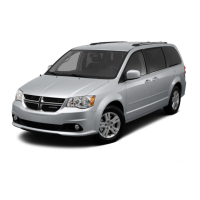

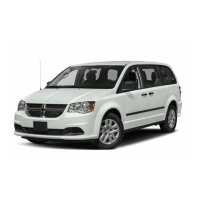



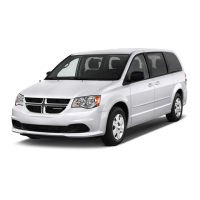


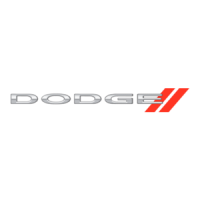
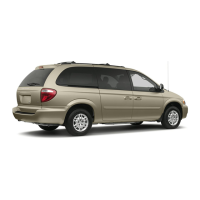
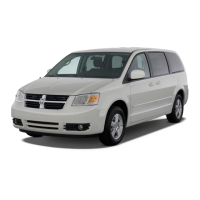
